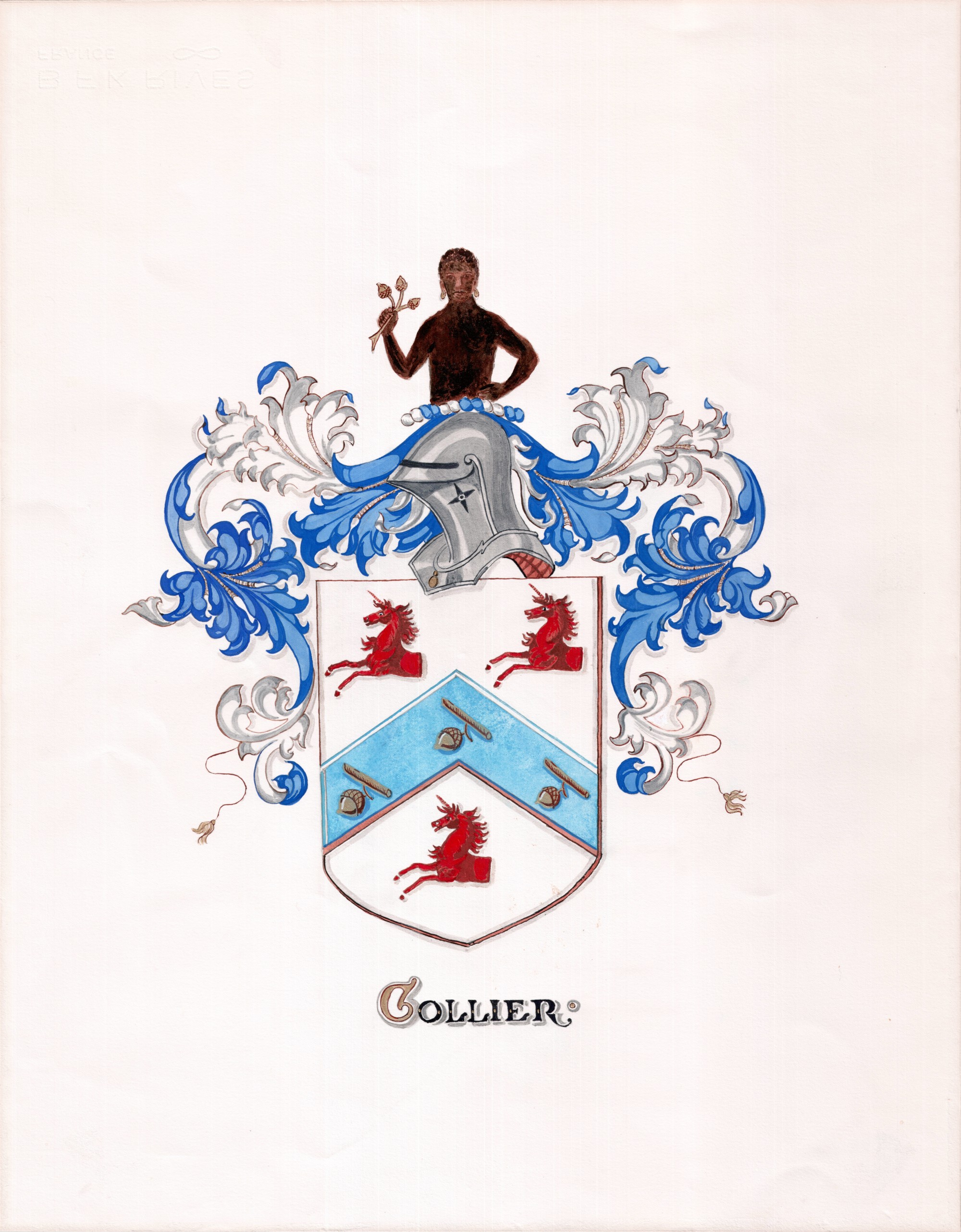
Collier Coat of Arms painted by Tiffany & Co. of New York in 1919.
Our post of March 12, 2015 (see post “Coat of Arms”) focused on the research that revealed Colliers are entitled to two different Coats of Arms. The one selected as the family crest by J. C. Collier is used as the logo for Collier Heritage Foundation. In 1919, Tiffany & Co. of New York was commissioned by D. C. Collier to create a painting of the selected Coat of Arms. The resulting painting, with its brilliant colors, is shown above. A letter from Tiffany, dated 1929, remarks on the painting and describes the significance of the various features on the crest. For those interested in history, the dark man at the top represents conflicts (presumably involving Colliers) with Saracens (Muslim Arabs) during the Crusades. Here are two Tiffany letters that discuss the Coat of Arms.
1919_04_18_Tiffany-Ltr 1926_07_08_Ltr-Tiffany-Co-to-DCCAdded in Response to Comments
The dark figure with earrings at the top of the Collier Coat of Arms usually generates questions. The figure has nothing to do with Afro-Americans in North America. In fact, according to the research contracted by J. C. Collier, this particular Coat of Arms was awarded to Robert Collier of Darleston and Stone by Queen Elizabeth I in 1583 – before the founding of Jamestown and pre-dating the introduction of slaves in the Colony of Virginia. The figure instead has its meaning in the struggle against Muslims in the Middle Ages.
The spread of Islam through military conquests began with Muhammad in the 7th century. In 711, Muslim forces from North Africa, called Moroccans or Moors by Europeans, began their conquest of the Iberian Peninsula, which is modern day Spain and Portugal. These “Moors” were of dark complexion, and the term came to be used synonymously with “negro”. Similarly, the term Saracen, which originally referred to certain desert-dwellers in Arabia, eventually was used for any Muslim Arab.
Muslims claimed Jerusalem as one of their sacred cities and controlled it throughout much of the Middle Ages. The Crusades were waged at the urging of various Popes to retake the Holy Land from Muslims. At the same time, Christian forces were in constant ebb and flow battle to repel the Muslim invasion of Europe.
So, “demi-negro” means the upper half of a dark man, and “black-a-moor” simply means what is says, a black Moor or Moroccan. The appearance on the crest suggests one Collier ancestor successfully engaged the Moors and came out victorious.

Interesting stuff!
Need some explanation of The Moore.